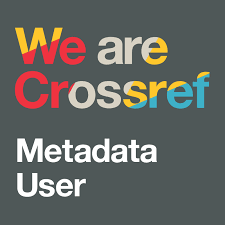Salafism in Indonesia: Ideology, Identity, and Politics
DOI:
https://doi.org/10.30983/itr.v3i1.9352Keywords:
Salafism, Islamic Identity, Post-Islamism, Digital Da’wa, GeopoliticsAbstract
This article investigates the ideological, identity-based, and geopolitical dynamics of the Salafist movement in Indonesia. Employing qualitative methods through an extensive literature review, the study utilizes Social Identity Theory as its primary analytical framework to examine how Salafi groups construct a distinct collective identity by asserting symbolic and doctrinal boundaries. To complement this framework, the concept of post-Islamism is interpretively applied to capture emerging tendencies within Indonesian Salafism that reveal greater flexibility, pragmatism, and selective engagement with democratic institutions. Findings indicate that while Salafi actors remain committed to doctrinal puritanism, they are simultaneously negotiating their presence in the broader Indonesian Islamic landscape through targeted digital da‘wah strategies and community integration efforts. Internal fragmentation and external socio-political pressures contribute to the development of more contextualized and fluid expressions of Salafism. Rather than a monolithic or static movement, Salafism in Indonesia constitutes a complex, evolving identity shaped by interactions among theology, digital media, state-religion relations, and global ideological currents.
References
Abdulmajid, A. (2023). Salafi-Influencers: Analytical Study of of the Discourse of Neo-Salafi Preachers on Social Media. Living Islam: Journal of Islamic Discourses, 6(2). https://doi.org/10.14421/lijid.v6i2.4489
Abdurrohman, A., Hidayatullah, Moh. S., Sholeh, N., & Syamsiar, H. (2024a). Persepsi Masyarakat Terhadap Jemaah Salafi (Studi Tentang Tipologi dan Relasi Sosial Jemaah Salafi). Jurnal Humanitas: Katalisator Perubahan dan Inovator Pendidikan, 10(4), 665–679. https://doi.org/10.29408/jhm.v10i4.28060
Abdurrohman, A., Hidayatullah, Moh. S., Sholeh, N., & Syamsiar, H. (2024b). Persepsi Masyarakat Terhadap Jemaah Salafi (Studi Tentang Tipologi dan Relasi Sosial Jemaah Salafi). Jurnal Humanitas: Katalisator Perubahan dan Inovator Pendidikan, 10(4), 665–679. https://doi.org/10.29408/jhm.v10i4.28060
Ananda, R. A., Khamdan, Muh. & Fata, A. K. (2024). Salafisme Di Indonesia: Identitas Dan Kontestasi Ideologi di Indonesia. Al-Ittihad: Jurnal Pemikiran dan Hukum Islam, 10(2), 16–33.
Arifin, A. Z., Sofia, A., & Hidayah, I. (2022). Revisiting Literacy Jihad Programs of ‘Aisyiyah in Countering the Challenges of Salafism. Religions, 13(12), 1174. https://doi.org/10.3390/rel13121174
Aswar, H., & Putri, G. (2022). State Repression on the Islamic Political Opposition in Indonesia in the Period of 2017-2021. Communications in Humanities and Social Sciences, 2(2), 41–47. https://doi.org/10.21924/chss.2.2.2022.32
Bayat, A. (Ed.). (2013). Post-Islamism: The Changing Faces of Political Islam. Oxford University Press. https://doi.org/10.1093/acprof:oso/9780199766062.001.0001
Brown, J. (2011). Salafis and Sufis in Egypt. Carnegie Endowment for International Peace.
Bubalo, A., & Fealy, G. (2007). Jejak Kafilah: Pengaruh Radikalisme Timur Tengah Di Indonesia. Mizan Pustaka.
Chaplin, C. (2018). Salafi Islamic Piety as Civic Activism: Wahdah Islamiyah and Differentiated Citizenship in Indonesia. Citizenship Studies, 22(2), 208–223. https://doi.org/10.1080/13621025.2018.1445488
Duderija, A. (2007). Islamic Groups and their World-views and Identities: Neo-Traditional Salafis and Progressive Muslims. Arab Law Quarterly, 21(4), 341–363. https://doi.org/10.1163/026805507X247554
Fakhrullah, A., Bakti, A. F., Hermansah, T., & Fanshoby, M. (2023). The Salafi Da’wa Movement in Jakarta from the Perspective of Media Glocalization. IJISH (International Journal of Islamic Studies and Humanities), 6(2), 113–130. https://doi.org/10.26555/ijish.v6i2.8728
Gupta, V. (2022). Understanding a Social Identity Theory. International Journal of Innovative Research in Computer Science & Technology, 10(8), 98–105.
Hamdeh, E. (2021). Salafism and Traditionalism: Scholarly Authority in Modern Islam. Cambridge University Press.
Hamming, T. (2013). Politicization of the Salafi Movement: The Emergence and Influence of Political Salafism in Egypt. International Affairs Review, 22(1), 1–18.
Han, M. I., & Rahmayanti, I. (2021). Salafi, Jihadis, dan Terorisme Keagamaan; Ideologi, Fraksi dan Interpretasi Keagamaan Jihadis. Kordinat: Jurnal Komunikasi antar Perguruan Tinggi Agama Islam, 20(1), 1–22. https://doi.org/10.15408/kordinat.v20i1.19024
Hasan, N. (2007). The Salafi Movement in Indonesia: Transnational Dynamics and Local Development. Comparative Studies of South Asia, Africa and the Middle East, 27(1), 83–94. https://doi.org/10.1215/1089201x-2006-045
Hasan, N. (2009). Laskar Jihad: Islam, Militancy and the Quest for Identity in Post New Order Indonesia [Disertasi]. The University of Utrecht.
Hasyim, A. (2019). Teologi Muslim Puritan: Geneologi Dan Ajaran Salafi. Yayasan Wakaf Darus-Sunnah.
Hidayatulah, R. P. (2022). Perkembangan Gerakan Dakwah Salafi dalam Konteks Demokrasi: Studi Kasus di Kota Tanjung Pinang. Jurnal Sosiologi Agama Indonesia (JSAI), 3(2), 96–110. https://doi.org/10.22373/jsai.v3i2.1754
Husni, H., & Bisri, H. (2024). Inclusivism and Exclusivism: Responses of Prospective Islamic Religious Teachers Towards Islamic Sects. HTS Teologiese Studies / Theological Studies, 80(1). https://doi.org/10.4102/hts.v80i1.9361
Iqbal, A. M. (2019). Internet dan Gerakan Salafi di Indonesia: Sebuah Kajian Awal. Diandra Kreatif.
Irwansyah, I., & Muary, R. (2024). Apolitical Salafi: Between Religious And Citizenship Identity In Indonesia. Jurnal Ushuluddin, 32(1), 88. https://doi.org/10.24014/jush.v32i1.29295
Isakjee, A. (2016). Dissonant Belongings: The Evolving Spatial Identities of Young Muslim Men in the UK. Environment and Planning A: Economy and Space, 48(7), 1337–1353. https://doi.org/10.1177/0308518x16641110
Ismail, R. (2021). Rethinking Salafism: The Transnational Networks of Salafi ’Ulama in Egypt, Kuwait, and Saudi Arabia (1 ed.). Oxford University Press. https://doi.org/10.1093/oso/9780190948955.001.0001
Kailani, N., & Ikhwan, M. (2021). Narasi Ekstremisme Keagamaan Di Indonesia Latar Pendidikan Dan Agensi Individual. Pusat Pengkajian Islam Demokrasi dan Perdamaian (PusPIDeP).
Krismono, K. (2017). Salafisme Di Indonesia: Ideologi, Politik Negara, dan Fragmentasi. Millah, 16(2), 173–202. https://doi.org/10.20885/millah.vol16.iss2.art2
Kulsum, U. (2021). Dakwah Islam Salafi Pada Instagram Khalid Basalamah Official Dalam Perspektif New Media [Tesis]. UIN Syarif Hidayatullah.
Mangum, M., & Block, R. (2018). Social Identity Theory and Public Opinion towards Immigration. Social Sciences, 7(3), 41. https://doi.org/10.3390/socsci7030041
Nadia, Z. N. (2018). Perilaku Keagamaan Komunitas Muslim (Pemahaman Hadis dalam NU dan Salafi Wahabi di Indonesia). Jurnal Living Hadis, 2(2), 141. https://doi.org/10.14421/livinghadis.2017.1327
Nurani, S. (2019). Salafî Women and Islamic Movements: The Case of Salafism in Jama‘ah Al-Khidhir. ULUL ALBAB Jurnal Studi Islam, 20(2), 233–254. https://doi.org/10.18860/ua.v20i2.5666
Pall, Z. (2013). Lebanese Salafis Between the Gulf and Europe: Development, Fractionalization and Transnational Networks of Salafism in Lebanon. Amsterdam University Press.
Pramana, M. A. (2023). Salafi Online: Dakwah Salafi Pada Akun Instagram @dakwah_tauhid. Idarotuna, 5(1), 63. https://doi.org/10.24014/idarotuna.v5i1.22792
Qodir, Z., Krismono, K., & Abdullah, I. (2023). Salafism in Rural Java: The Struggles of Indonesian Islam Since the Fall of the New Order. QIJIS: Qudus International Journal of Islamic Studies, 11(2), 247–278.
Redjosari, S. M. (2019). Salafi dan Stigma Sesat-Radikal. ISLAMICA: Jurnal Studi Keislaman, 13(2), 305–324. https://doi.org/10.15642/islamica.2019.13.2.305-324
Setyawan, D., & Nugroho, D. (2021). The Socio-religious Construction: The Religious Tolerance among Salafi Muslim and Christian in Metro. Dialog, 44(2), 190–203. https://doi.org/10.47655/dialog.v44i2.479
Singh, B., & Qodir, Z. (2015). Gerakan Islam Non Mainstream dan Kebangkitan Islam Politik di Indonesia. Pustaka Pelajar.
Spadaro, G., Liu, J. H., Zhang, R. J., Gil De Zúñiga, H., & Balliet, D. (2024). Identity and Institutions as Foundations of Ingroup Favoritism: An Investigation Across 17 Countries. Social Psychological and Personality Science, 15(5), 592–602. https://doi.org/10.1177/19485506231172330
Sugi, L., Rahman, M. Abd., & Kamarzaman, M. H. (2023). A Behaviour of Religious Moderation among Salafi in Ambon. Analisa: Journal of Social Science and Religion, 8(2), 187–202. https://doi.org/10.18784/analisa.v8i2.2102
Sunarwoto. (2021). Online Salafi Rivalries in Indonesia: Between Sectarianism and ‘Good’ Citizenship. Religion, State and Society, 49(2), 157–173. https://doi.org/10.1080/09637494.2021.1924014
Suratno. (2022). Ideology and Identity Transformation in the Deradicalization of Muslim Extremists in Indonesia. IJoReSH: Indonesian Journal of Religion, Spirituality, and Humanity, 1(2), 189–214. https://doi.org/10.18326/ijoresh.v1i2.189-214
Syamsir, A., Septiadi, M. A., Nurhakiki, M. I., Al-Habsy, M. I., & Hidayah, M. R. A. (2021). Salafi Puritanism in Indonesia. International Journal of Islamic Khazanah, 11(2), 134–149. https://doi.org/10.15575/ijik.v11i2.13199
Tabroni, R., & Idham, I. (2023). From Radical Labels to Moderate Islam: The Transformation of the Salafism Movement in Indonesia. Indonesian Journal of Islam and Muslim Societies, 13(2), 279–306.
Tajfel, H., & Turner. (1979). An Integrative Theory of Intergroup Conflict. Dalam W. G. Austin & S. Worchel (Ed.), The Social Psychology of Intergroup Relations. Brooks/Cole.
Taufik, M., & Taufik, A. (2020). Hijrah and Pop Culture: Hijab and Other Muslim Fashions Among Students in Lombok, West Nusa Tenggara. Teosofia: Indonesian Journal of Islamic Mysticism, 8(2), 97–116. https://doi.org/10.21580/tos.v8i2.5305
Wahib, A. B. (2017). Being Pious Among Indonesian Salafists. Al-Jami’ah: Journal of Islamic Studies, 55(1), 1–26. https://doi.org/10.14421/ajis.2017.551.1-26
Wahid, D. (2014). The Challenge of Democracy in Indonesia: The Case of Salafi Movement. Islamika Indonesiana, 1(1), 51–64. https://doi.org/10.15575/isin.v1i1.5
Wiktorowicz, Q. (2006). Anatomy of the Salafi Movement. Studies in Conflict & Terrorism, 29(3), 207–239. https://doi.org/10.1080/10576100500497004
Wilonoyudho, S., Salim, L. A., & Muhtaram, A. (2020). The Perspective of Puritan Moslem on the Family Planning Program: The Case of Salafimovement in Semarang, Central Java, Indonesia. Indian Journal of Forensic Medicine & Toxicology. https://doi.org/10.37506/ijfmt.v14i4.12159
Yahya. (2022). Selektifitas Salafi Dalam Mengaktualisasikan Hadis Nabi. Ihyaussunnah : Journal of Ulumul Hadith and Living Sunnah, 2(1), 54–60. https://doi.org/10.24252/ihyaussunnah.v2i1.30856
Yakin, A. U. (2018). Salafi Dakwah and the Dissemination of Islamic Puritanism In Indonesia: A Case Study of the Radio of Rodja. Ulumuna, 22(2), 205–236. https://doi.org/10.20414/ujis.v22i2.335
Downloads
Published
Issue
Section
Citation Check
License
Copyright (c) 2025 Islamic Thought Review

This work is licensed under a Creative Commons Attribution-ShareAlike 4.0 International License.




